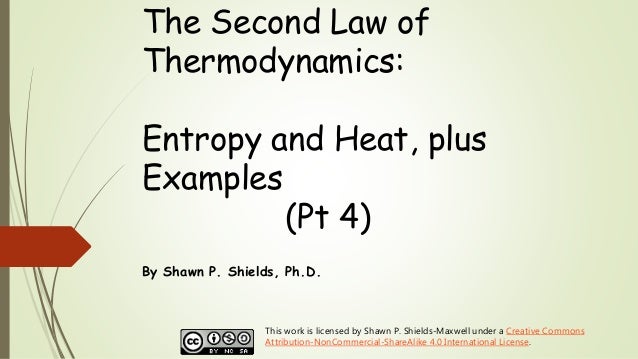


Thus in contrast to the other answer I conclude that the second law is about isolated systems. When considering microstates heat and energy exchanges are interactions that increase the number of microstates for an isolated systeme, but can leave a closed system. The difference between an isolated system and closed system is that heat may not flow to and from an isolated system, but heat flow to and from a closed system is possible. The summation is over all the possible microstates of the system, and p_i is the probability that the system is in the i-th microstateĪs all definitions of entropy are equivalent, this formulation makse clear that the statement of the second law is about isolated systems as defined above.įollowing the second law of thermodynamics, entropy of an isolated system always increases. Where kB is the Boltzmann constant, equal to 1.38065×10^−23 J/K. The constant of proportionality is the Boltzmann constant. This definition describes the entropy as being proportional to the natural logarithm of the number of possible microscopic configurations of the individual atoms and molecules of the system (microstates) which could give rise to the observed macroscopic state (macrostate) of the system.

In statistical mechanics, entropy is a measure of the number of ways in which a system may be arranged, often taken to be a measure of "disorder" (the higher the entropy, the higher the disorder). The more such states available to the system with appreciable probability, the greater the entropy. In contrast to the macrostate, which characterizes plainly observable average quantities, a microstate specifies all molecular details about the system including the position and velocity of every molecule. For a given set of macroscopic variables, the entropy measures the degree to which the probability of the system is spread out over different possible microstates. The interpretation of entropy in statistical mechanics is the measure of uncertainty, or mixedupness in the phrase of Gibbs, which remains about a system after its observable macroscopic properties, such as temperature, pressure and volume, have been taken into account. I am partial to the second law formulated in terms of entropy and of entropy defined with statistical mechanics An isolated system cannot exchange any heat, work, or matter with the surroundings, while an open system can exchange energy and matter In thermodynamics, a closed system can exchange energy (as heat or work) but not matter, with its surroundings. In physical science, an isolated system is either of the following:ġ) a physical system so far removed from other systems that it does not interact with them.Ģ) a thermodynamic system enclosed by rigid immovable walls through which neither matter nor energy can pass. According to your links an isolated system is :


 0 kommentar(er)
0 kommentar(er)
